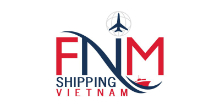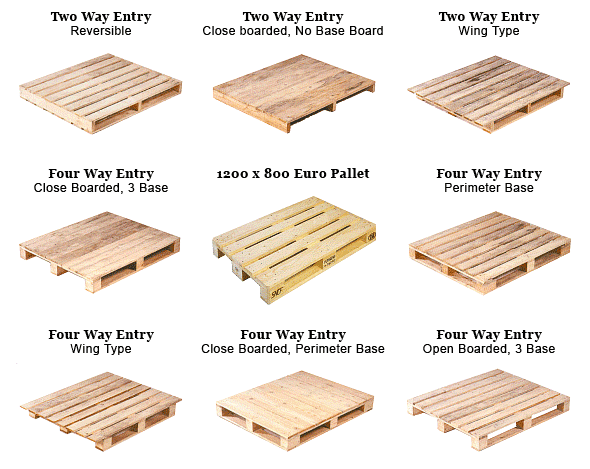Are you planning to import products made in Vietnam? Are you discussing the packing with your supplier? You’re not sure if the packing solution he will provide is enough? Having these interrogations is normal, and everything will be clearer after reading this page. Here is all you need to know about the packing, before implementing any trade process.
Summary
1) Why packing is extremely important?
The packing is a crucial phase when you transfers goods. Indeed, a correct packing will protect your goods against all constraints applied by the environment. Your goods will be handled many times during their transfer, in the loading/unloading and handling procedures, which are risky steps.
Also, in case of damage, the insurance company covering your goods will systematically watch the packing. If they judge it inadequate, they can refuse to refund you.
To avoid these types of situations, you must express clearly your packing requirements to your supplier. Be pernickety when negotiating this part of your contract and look for clear and precise answers.
2) How to choose the most adapted packing method?
To find it, you must follow these few steps:
-
First, learn about the packing and labelling standards and norms in the country of destination. Also, be sure that the products you are transferring, are not containing forbidden components, or are not simply forbidden in the country of importation. Then, you can choose the most adapted packing method, in considering a few parameters.
-
The packing must be shaped to the chosen transport method. For an ocean freight for instance, the packing must protect your goods from humidity. The trucking phases before and after the sea freight will not spare your shipment, so be sure that your packing is resistant.
-
Your packing must be adapted to the risks that your goods may incur. Specific risks are existing, for all types of transports. For a maritime freight, there is the handling, loading and unloading phases, the searoute, the season, the POD and POA reputation…
-
The packing should also be adapted to your goods’ category. For example, an easily oxidizable material should be packed under vacuum in a wooden case. Then it will be preserved.
-
Finally, provide clear instructions to your freight forwarder or your carrier so they will correctly handle your goods. If your cartons must be positioned particularly…
After determining all these parameters, you’ll be able to know if your goods must be packed in cartons and/or palletized… We’re describing all the different packing materials in the next paragraphs.
3) Small guide for packing a shipment from/to Vietnam
3.1) All different sorts of carton
Generally, carton is limited by the weight it can handle, because it is composed with paper paste. It isn’t convenient to handle it mechanically, and it can’t be directly manipulated by a forklift. This explains why it must be palletized to be internationally transferred. This material isn’t also resisting well to the climate elements, it is a poor protection against cold and humidity, that will easily pass through it. To counter this problem, it can be wrapped with plastic film. Otherwise, it is a cheap material that can be easily reused/recycled.
3.1.1) Corrugated cardboard
They are used to pack clothes, books and other items that aren’t fragile.
3.1.2) Double wall corrugated cardboard
It is a great alternative to wooden crates. It is regularly used in the import-export industry.
3.1.3) Doubled cardboard boxes
These boxes are generally used for fragile items like glass, china and all other small objects that are requiring particular care.
The following table is comparing the resistance of simple and double wall corrugated carton boxes in function of their dimensions:
| Simple corrugated carton | Double wall corrugated carton | ||||||
| Maximum weight of content (pounds) | Box limit size (inch) | Bursting test (pounds per square inches) | Edge crush test (ECT) (pounds per inch width) | Maximum weight of content (pounds) | Box limit size (inch) | Bursting test (pounds per square inches) | Edge crush test (ECT) (pounds per inch width) |
| 30 | 75 | 200 | 32 | 60 | 85 | 200 | 48 |
| 40 | 75 | 200 | 40 | 80 | 95 | 275 | 51 |
| 50 | 85 | 250 | 44 | 100 | 105 | 350 | 61 |
| 65 | 95 | 275 | 55 | 120 | 110 | 400 | 71 |
| 80 | 105 | 350 | NA | 140 | 115 | 500 | 82 |
| 150 | 120 | 600 | NA | ||||
(source: UPS)
3.2) Wood, metal or plastic crates
Crates are generally used for heavy and large items. Their rigidity is a great protection for your goods. High value-added objects are generally transported by wooden crates. In wood or plastic, crates are generally resistant and recommended. The cost of this packing method is higher, as same as the protection provided.
3.3) Plastic or wooden pallets
All ports, terminals and warehouses are designed around two unavoidable freight items, the pallet and the container. These two objects revolutionized all industries because they are secured and easy to handle. Palletization is used to consolidate small cartons together. It is also necessary for large and heavy shipments. Items are placed on a solid support (a pallet), then wrapped with plastic film and cinched. Hence, they can be easily managed by forklifts.
Here are the sixth ISO pallets dimensions used worldwide:
- 101,6 x 121,9 cm in North America
- 100 x 120 cm in Europe and Asia
- 110 x 110 cm in Asia
- 80 x 120 cm in Europe
- 116,5 x 116,5 cm in Australia
- 106,7 x 106,7 cm worldwide
FNM Note: pallets are regulated worldwide under the ISPM 15 certificate. The IPPC logo must be present on each pallet.
Here is an example of the ISPM 15 stamp, providing the country of origin (France), the registration number and the wood cutting method. The IPPC logo is present on the left (International Plant Protection Convention).
3.3.1) Which material is better for pallets, wood or plastic?
Above, are displayed the different types of wooden and plastic pallets
You’re certainly asking yourself what is the between a wooden and a plastic pallet. The answer is completely depending on your situation. That said, we will compare advantages and drawbacks of both solutions in the following table, to help you choose.
| Wooden pallets | Plastic pallets |
| Advantages | |
| A lot cheaper than plastic | Very resisting, you can keep a pallet for ten years at least |
| Easily repairable because it’s easy to replace a broken plank | 30% lighter than wood, so the price of shipping is reduced |
| Wooden pallets can be reused for different purposes. Reused wood can also be transformed into a pallet | Can be handled without risks, no splinters… |
| Wood is reusable and recyclable | Resisting to acid or alkaline chemicals, which means that it can be easily washed against bacteria and others… |
| Wooden pallets can be easily bought, found and replaced | They can be washed chemically, with steam or hot water. |
| Because wood is a very adherent material, the risk of sliding is more reduced than for plastic | Depending on the plastic used, they can be recycled |
| Drawbacks | |
| Wood is easily deformed and breached, because it is an organic material | More expensive than wooden pallets, it is their main drawback |
| There is a bigger risk of injury caused by splinters | Hardly reparable, it’s easier to buy another |
| It is hardly washable | Less adherent than wooden pallet, the sliding risk is more important |
| When the wood is wet, bacteria and fungus are easily developing | They are requiring a attention when bought, because a poor plastic will easily break |
| They must be treated regularly to avoid the propagation of invasive species and plant diseases | |
| A lot heavier than plastic | |
3.4) Bags for bulk products
Raw products’ packing is often made with flexible woven plastic bags.
For example, strong and resistant polypropylene bags. It is an ideal packing material for bulk products. Depending on their dimensions, these bags can bear 1 or 2 tonnes of products and are easily loadable and unloadable.
Here is a picture of a woven polypropylene bag, containing bulk products
4) Our advices for a great packing
For voluminous objects like furniture, it is advised to wrap them first into several layers of bubble wrap. Ensure that the wrapping is strengthened on the fragile parts. After the bubble wrap, polystyrene must be placed at least on the angles and on the sensitive parts. Then, put the objects into cartons or wooden crates, and ensure that your objects cannot move inside of them. Palletize them and cinch the carton or crate, with nylon or metal cinch.
For small and fragile objects or materials like glass, china or ceramic, wrap them one by one in bubble wrap. After, put them in a doubled carton box, with a height and width difference of 5 cm between the two cartons. You can palletize it if necessary.
5) How to mark your shipment
As said previously, it is the exporter duty to inform the forwarder and the carrier of the handling conditions of its shipment, to avoid any damage. To communicate it, the last layer of packaging can be marked. So, each person in charge of the goods will know how to handle them.
There are about 20 marking icons. Each one is signifying something very precise that is internationally recognised. Here are the main icons and their signification:

Don’t clamp here: It indicates the places on a carton or a shipment where the lifting accessories shouldn’t be putted.
Do not stack: It indicates that the shipment cannot be vertically stacked.
Stacking weight limit in kgs: It indicates that the parcel can’t bear more than XX kgs above it.

Do not transport with a dolly: It indicates that the parcel can’t be transported by a dolly or manual means of handling.
Don’t handle with a forklift: It indicates that the shipment cannot be handled by a forklift or all similar engines.
Fragile: It indicates that what is contained by the parcel is fragile and must be handled with care.
Centre of gravity: It indicates the centre of gravity of the parcel.
Protect from solar radiations: It indicates that the parcel shouldn’t be exposed to sun.
Protect from heat and radioactive sources: It indicates that the parcel must be protected from heat and ionizing radiation.
Protect from radioactive sources: It indicates that the shipment must be protected from ionising radiations.


Temperature limits: Indicates the maximum and minimum temperatures at which the package is to be stored and transported.
Do not use hook: Indicates that lifting hooks should not be used as a manutention tool on the shipment.
Vertical: It indicates the vertical position of the parcel, so it can be properly arranged.
6) The labelling requirements of products imported from Vietnam
Your product’s labelling should absolutely provide certain information to your consumer:
- Information about the product composition and what it is containing
- Information and address of the supplier
Each country is possessing its own standards in terms of labelling. As an example, the standards applied in Germany are the same as the standards applied in Italy, and so on in each country of the European Union.
Furthermore, precise norms may also exist depending on the product you’re trying to import.
Do not hesitate to contact us for further information on labelling, or you can consult the ISO packing norms website and the IAPRI’s (International association of packaging research institutes) website.
For all goods’ packing in Vietnam, without regarding if they are personal effects or commercial goods, do not hesitate to ask for our packing services. Highly trained, our staff can pack every kind of goods, no matter their size, their weight or their form. If you’re planning an international move from Vietnam, or if your supplier isn’t proficient enough to ensure a satisfying packing of your goods, our teams will be pleased to handle it. Contact us!
FAQ | Packing services
⚠️ Why is packaging so important?
Packaging is important since it is the step that will condition the goods throughout the entire logistics process. In addition to security against the various shocks that your cargo can undergo, this packaging will support your file with insurance in the event of a dispute.
💰 How much does a packaging service cost?
The price of the packaging solution will depend on a multitude of points including the size of the goods, the specificity of the packaging, and of course the place of service since the cost of labor can be increased tenfold from country to country. another.
📦 What type of packaging is there?
There are a multitude of types of packaging so that each item is packaged as adequately as possible. You can put your goods in cartons, trunks, wooden cases, or even vacuum antioxidant boxes.
🚨 Is packaging compulsory?
Packaging is compulsory under certain conditions, for example when you share a container with other shippers (what is called maritime groupage or LCL), you are obliged to palletize your goods. Note that if you reserve a complete container (or FCL), you are free to dispose of the goods on the ground in the container.
DocShipper | Your dedicated freight forwarder in Vietnam !
Due to our attractive pricing, many customers trust our services and we thanks them. Stop overpaying the services and save money with our tailored package matching will all type of shipment, from small volume to full container, let us find the best and cost-effective solution.
Communication is important, which is why we strive to discuss in the most suitable way for you!






